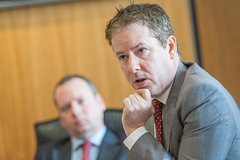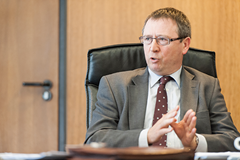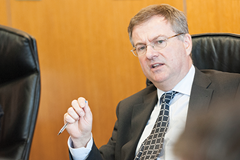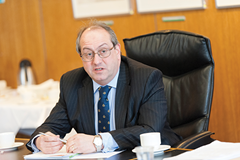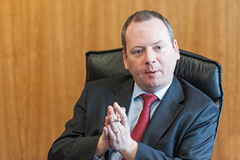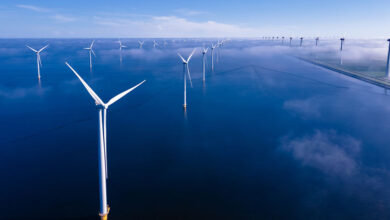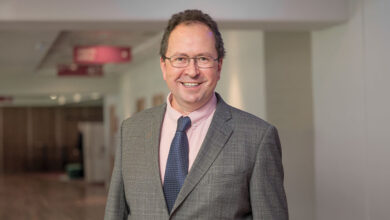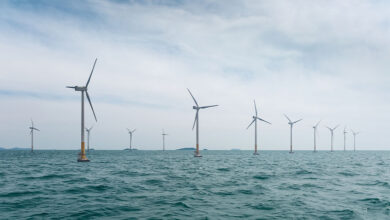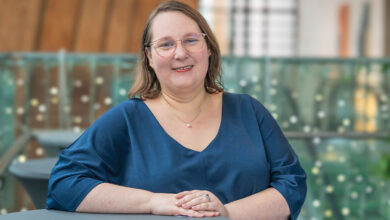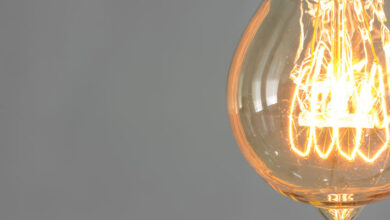The Energy Institute
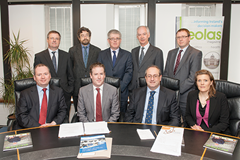 With energy policy moving towards meeting 2020 targets, investment decisions made now will be with us in 40 years’ time. The Energy Institute Republic of Ireland brought together key stakeholders across the energy sector to discuss the crunch decisions to be made.
With energy policy moving towards meeting 2020 targets, investment decisions made now will be with us in 40 years’ time. The Energy Institute Republic of Ireland brought together key stakeholders across the energy sector to discuss the crunch decisions to be made.
How will we achieve Ireland’s renewable electricity targets? Will this be at the expense of its competitiveness?
Brian Motherway
We have a wind resource that others don’t have. The economics of wind are better here than in most places. While we want to do much more, it’s worth remembering that we’ve hit the 2,000MW of wind mark. Routinely at the moment, we are getting 20 per cent of our electricity from wind.
What we are doing to bring that wind into the system and absorb all that asynchronous generation into a synchronous grid with low interconnection is interesting internationally. We are facing challenges that others will face in a few years. Our view for the rest of this decade is that most of the growth is in onshore wind. There is plenty in the pipeline if the various regulatory hurdles can be addressed. After that, other technologies, firstly offshore wind and then wave and tidal, will grow.
Again, while there are plenty of technical and commercial challenges to be solved there, it is worth remembering that there is going to be an incessantly growing market for clean energy in Europe and we are rich in the resource. We can become a significant exporter.
John FitzGerald
Our research suggests that it is economically sensible for Ireland to deploy a substantial amount of wind on the system. There are good reasons from a consumer’s point of view because if prices are high, consumers will be better off with a lot of wind, whereas they would lose if gas prices ended up low.
The reason we are doing it is not because of an EU target. For Ireland, renewables make sense.
Exports should be fully commercial and there is a risk that, if we were to put in place infrastructure to allow exports without a credible long-term contract with authorities in other countries, we could find ourselves with stranded assets.
To successfully deploy the quantity of renewables we need, by 2020, to deliver the North/South interconnector and we are going to need further substantial interconnection between Ireland and the rest of Europe.
One challenge is whether or not the grid will be built out generally, the North/South interconnector in particular.
Most of the ‘firm dates’ for renewable generation depend on the delivery of the North/South interconnector in a reasonable period of time. In meeting the targets, while this would perhaps not be the way one would want to go, I think it is probable that there will be a stream of entry over the next eight or nine years and there will be a rush in the last couple of years as projects get built.
There are challenges in terms of regulation, in terms of giving enough clarity and certainty. In some ways, the regulator could improve on that to allow such investments to take place.
On the issue of competitiveness, to some extent, it is an attitude towards risk. At the moment, the price of electricity is strongly dependent on the price of gas. The correlation is spectacularly high.
Bringing on more renewables should reduce risk. As to whether or not it will be a good thing in price terms, we will only know ex-post.
If shale gas is the cure for high gas prices that some say it is, then in 2020 we will have made a mistake in pure competitiveness terms. The price of electricity will have been higher for taking on the targets.
Cormac O’Rourke
There’s a shortage of bank or quasi-bank financing for renewable energy at the moment. That space is gradually being populated by vendor finance. There is certainly some financing available.
I would have a serious concern about the ‘constraining off’ issue. The idea that new projects can bear the cost of constraining off runs the risk of bringing the financing of onshore wind to a shuddering halt. It’s got to be spread across the market.
Offshore wind doesn’t make sense for us.
It doesn’t make sense for the Irish consumer to subsidise offshore wind and have it land in the UK whether as brown or green electricity. At the moment, the REFIT prices just aren’t high enough.
There has been a lot of talk over the past five to 10 years on covering the intermittency of wind with open cycle gas turbines (OCGTs). One of the things that’s worth remembering about power systems is that older power stations survive on intermittency. Most power stations are bought as a base load. They gradually migrate to medium-merit and low-merit. Providing you have capacity payments in the market, you can keep them on and you don’t need to cover your intermittency with OCGTs, in fact they are not even a good technical solution.
Onshore wind is as close to competitive as you can get at the moment and it will become competitive against gas. Some studies I’ve seen in the US market are showing that, even with shale gas over the next five to six years, as vendors begin to bring the price of the kit down, it’s actually becoming competitive with combined cycle gas turbines (CCGTs).
It’s interesting that when wind started in Ireland, it was the butt of everyone’s joke but now we can talk about it being economically sensible. The one thing I have learned over 30 years in energy is that you are always right if you diversify and you are always wrong if you put a single bet on any energy.
David Taylor
I think we’ve had an interesting input from Cormac with regards the role of older plant and that’s contrary to the current public discourse. The other area where we haven’t seen large effects is in demand management. One could assume that with the development of smart technologies, we will see demand response that is superior in addressing intermittency.
The emphasis of the discussion so far has been on competitiveness without any direct reference to hidden costs such as grid cost and the cost of carbon abatement. Clearly, they are strategic issues.
Overall, what I do see is a lack of quantitative analysis. In terms of the robustness of policy, what kind of variation from mean electricity prices could we tolerate? To some extent, I think policy in the electricity area in particular (with regards renewable and fossil fuels) could be better informed by having targets relative to our trading partners: ones that we explicitly go after as being important to secure growth.
How will the Single Electricity Market (SEM) be integrated with the north-western EU market? What are the risks associated with increased electricity interconnection with Great Britain?
Jill Murray
It has to happen due to our obligations. The SEM committee have a very difficult debate ahead. There are various degrees of debate regarding protecting what we have or moving away from it completely. I don’t think anybody has the answer.
If we are going to go where we think we are with renewables, we do need more interconnection, and integration with European markets. The question is what do we mean by integration? Does it mean one market where everybody has the same arrangements? We need arrangements that take into consideration Ireland’s physical infrastructure and recognise that it is different from our European counterparts – one size does not fit all.
Regarding competitiveness: how do we sit within that European market and how will that European market actually incentivise investment?
In the long term, there has to be something other than support systems to incentivise investments, we need a stable and credible set of market and regulatory arrangements to achieve this.
I think there are discussions going on at a policy level about the idea of potentially Britain having an appetite for renewable energy to meet its own targets. It is possible that they will lead to a situation, out of market, of Britain building an interconnector to take renewable energy directly from Ireland to Britain in a way that does not fall within the aegis of general market conditions.
Significant change to the SEM at this relatively early point is not something I would have welcomed but we are left with no choice. We have to adhere to new rules by 2016. There are consultation papers out at the moment. Industry is giving different views, but difficult decisions will probably have to be made, essentially by the end of this year.
A year or so ago when this issue of integration first cropped up, there was a sense of: “Let’s do this in a slow transformative fashion, let’s keep the essential features of the SEM.” From what I have seen of industry discussions so far, that has shifted somewhat. Some people are saying: “Right, if we’re going to have to change to meet new rules, let’s just change the market quite radically and potentially just integrate it with Britain.”
John FitzGerald
One of the problems for Ireland is the credibility of policy elsewhere. We don’t know what the UK is going to do. And some of the things they say they’re going to do are not credible. We have bought a certain credibility by putting in place the SEM and committing to it. To scrap the SEM now, where firms have invested on the basis of capacity payments, would be a regulatory disaster.
Scrapping the SEM is not a good idea if we can avoid it but it won’t work alongside the GB system. The software costs in this area will be massive.
By forcing changes where the percentage costs on consumers in different countries is going to be different is a problem for us, but ultimately, in the long run, having an interconnected European system is likely to be a good thing. The concern is which European system we buy in to.
The policy on interconnection is going to be important for Ireland’s strategic interests.
Backing a particular policy in Britain is not a good idea for a state. In this area we’ve got to look at how we manage
the interconnection. My concern on exports is if you put in 2,000MW of interconnection to Great Britain, and we’re part of a north-western European electricity system and anybody can connect up to it, it is the consumers in a nation that have to pay for adequate transmission to handle everything that flows.
If you want to socialise all the costs of transmission, then you can go for the Pareto optimum and that’s okay. You need some strategy to protect the interests of the nation. I don’t know what the answer is.
Michael McNicholas
The SEM is a really good product. It is completely different from what anyone envisaged when it started. The scale of what is now proposed compared to the simple integration of the North-South markets is mind boggling. But the model and experience is in this country to actually do that.
I think the ultimate endgame, if you get it right, has to be good, provided you protect consumers. When the SEM was being developed, we had no spare generating capacity in the country. We are in the happy position of having too much capacity at the moment, which means we have space and time to design the market structure when you’re not actually under the gun to incentivise investment flow.
Jill Murray
Relating to the risks of interconnection, and the speed of required integration, I don’t think anybody in Europe has looked at the question of how a market copes with the levels of renewables intermittency to the extent that we have, and our market seems to work for that. There are slight tweaks that can be made but the fundamental policy design in Ireland seems to work and Europe should look to this as part its longer term objectives.
Dermot Nolan
It’s certainly not in my mind in any sense clear that we would move to a bilateral market by 2016. It’s very possible that we will still retain the basic structure of the SEM.
How can Ireland’s gas security be improved?
The first step is to bring onstream the gas that’s already discovered in Corrib. As soon as that happens the security of supply situation is immediately much better. It’s been a tragedy that it’s taken this long. Our company is very active in looking for more gas offshore. We are active off the south coast. We think the Kinsale infrastructure is really important in continuing to encourage exploration in that area, and we think we’ve got good chances of finding more gas to tie through the infrastructure.
Off the west coast, my view’s always been that it’s going to be a lot more gas- than oil. Porcupine is going to be more gas than oil, and the same in the Rockall Trough. The basins are proving to be gas- bearing. We haven’t had an active enough programme for the offshore. I think a big part of that is down to Corrib.
From an onshore point of view, Ambassador achieved some small flow rates of gas in the north-west basin in the 1950s and 1960s. And that’s obviously come back into play now with the fracking and the concept of shale gas. I don’t see any chance for conventional gas onshore in the north-west shore. If there’s gas to be found onshore, it’s to be through fracking.
To improve the security of supply, there’s the storage angle. It’s still strategically important to have more gas storage here.
The other factor is the liquefied natural gas (LNG) being looked at in Shannon. If you have got an LNG terminal, then you’ve always got another way of bringing gas into the system.
David Taylor
An ongoing concern for us is the impact of Corrib on activity in the area. We actually think the popular basis for good policy doesn’t exist in Ireland. A major initiative in this area by the interests would be appropriate because of the cost of capital in Ireland and the risk perception for anyone investing in further exploration offshore.
How can Ireland be promoted for oil and gas exploration? Would an agency approach make a difference to the effectiveness of policy?
Steve Boldy
The Petroleum Affairs Division of the Department of Communications, Energy and Natural Resources is trying to do is both the regulatory side of offshore activity and the promotional side. That’s always been a tricky thing to do. So that’s one thing that’s been discussed before: maybe separating the promotional side from the regulatory side. They’ve always been thinly resourced. If they followed more the (well-resourced) IDA type agency model in trying to encourage people to try and come here, I think it might be more successful.
Jill Murray
Taking on board the need for a policy overview on Corrib, in one way Europe provides opportunity for the same integration that’s going to happen in gas as is arising in electricity. That’s one way for us to make our gas storage project viable. There is an opportunity for Ireland to reduce its cost of security of supply if the European policy is right.
David Taylor
Part of the interest in the agency approach was to replicate the promotional success of the IDA and that of SEAI with wind. If you compare the experiences in Ireland and mainland UK, we started promoting wind long before there was ever a possibility of realising an economic return. That didn’t happen in the UK, and development of the industry in the UK fell foul of local interests and planning, whereas here we actually had a surplus of planning permits and therefore a competitive market. We’ve seen the opposite with the early shale gas work; there’s no responsible independent agency placing information in the public domain.
The institute believes that something is needed to fill the gap because there’s an assumption I think, perhaps not explicit, that the only goal is renewables, but actually we’re sitting on a huge finance deficit that needs to be addressed before we go anywhere with anything.
What are the energy research priorities for Ireland?
I suppose one has to start with the why of energy research: why are you pursuing particular lines? It’s particularly pertinent for a small country in a big field, and prioritising is essential. We do tend to disperse things very widely and forget about the point of being an international competitor.
The core drivers for prioritisation should be solving problems that we really need solved, that someone else isn’t going to solve for us, and bringing economic and enterprise benefit to Ireland.
Cormac O’Rourke
The key issue is grid stability. We’re one of the most exposed to wind. We don’t have synchronous interconnection and we won’t have it because nobody has discovered how to put AC interconnection under the sea. We’re going to have to solve that. I would quibble with the investment in wave technology. I don’t see us manufacturing large wave machines. That’s going to be done where the ship building industries are, which is in the Far East.
I’d be more interested in spending money on developing licensing methodologies for grid stability software which might apply in the longer term to offshore wind.
John FitzGerald
You don’t want to put all your money on an outsider. The EU spends a massive amount on research on nuclear and they backed an outsider and it didn’t come in. If they’d put a fraction of that on renewables, we would have a decarbonised European economy today.
Michael McNicholas
A lot of companies don’t see the value of the skill set or technology capability they have themselves in the energy area and they don’t also have the experience of how to commercialise it. Ideally there would be an organisation that has the experience in this, that understands what the endgame is, and supports these organisations to create real employment opportunities and a strong brand for Ireland.
In the light of the depth of the economic crisis, what is the one near-term priority for energy policy?
Steve Boldy
Get Corrib on stream. As soon as that happens, things will be much better, the situation will be much improved.
Cormac O’Rourke
Make sure the delivery of the onshore wind programme actually happens. There are subsidiary issues around things like insulation and fuel poverty where we’ve got to move from a self-selecting group (where you are offering grants to people who already have the money to do something) to addressing where the greatest level of need is.
Brian Motherway
Energy security remains a concern. We need to be alive to our vulnerability as an importer of so much of our energy.
We’ve made some good progress in energy efficiency, which delivers on short- term goals such as employment. But there is more to do in all areas, and we need more ambition and urgency across the board.
Dermot Nolan
Make key infrastructure easier to build: a Herculean task but an important one.
David Taylor
If we were seen to act convincingly to address a major issue like gas security by diversifying sources of supply, we would achieve several things so I think: practical action addressing key issues towards reputational gain.
Jill Murray
From an investor’s point of view, the main thing we would like to see is policy stability. Climate change, energy efficiency and renewable energy policies are interacting and nearly cannibalising each other. We need to focus on developing a coherent solution across the three areas to provide a stable environment that we can all work in.
Michael McNicholas
In the short term, all policy-makers should be aware the important thing is to do nothing with energy policy that makes us uncompetitive and makes the environment for job creation more difficult.
John FitzGerald
Find the right answer to the EU electricity market because that’s going to affect Ireland for the next 40 years.

